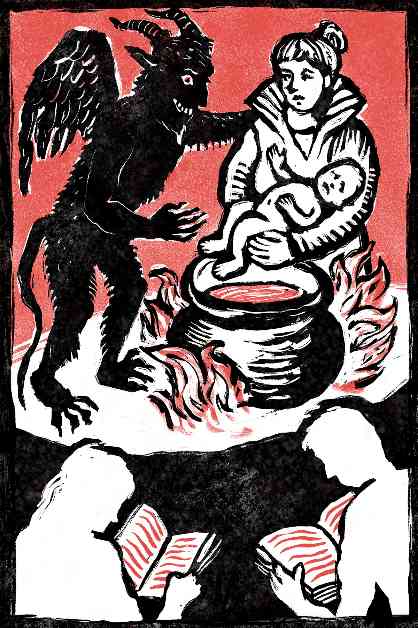In the prologue to Witchcraze: A New History of the European Witch Hunts, author Anne Llewellyn Barstow reflects on the relevance of historical events to contemporary issues of violence and discrimination against women. Witches have been a recurring theme in literature and theater for centuries, with scholars like Kay Daly finding modern significance in their portrayal on stage.
Daly, a former theater critic and English PhD, developed a course at Newberry Library exploring the depiction of witches in theatrical texts. What started as a spontaneous idea during grad school led to a deep dive into the representation of witches in literature. The course covers a range of works, from classic plays like Macbeth and The Crucible to lesser-known pieces like The Witch of Edmonton.
The Witch of Edmonton, based on a real witch trial in the 17th century, highlights the societal pressures and prejudices faced by women, particularly those who were marginalized and vulnerable. The play explores the idea that society can create witches through its treatment of certain individuals, reflecting a sociological perspective on witchcraft that differs from traditional portrayals.
Silverman’s play, Witch, builds on the themes of The Witch of Edmonton, challenging the audience to consider how culture shapes perceptions of witchcraft and women’s roles in society. The play raises questions about power dynamics, gender discrimination, and the impact of conspiracy theories on modern culture.
Daly’s course delves into the historical context of witchcraft trials, emphasizing the gender and class dynamics at play in accusations of witchcraft. Works like Vinegar Tom by Caryl Churchill shed light on the intersection of gender politics and witch hunts, offering a critical perspective on the motives behind witchcraft trials.
The portrayal of witches on stage reflects a broader cultural fascination with the supernatural and the unknown. Shows like Becky Nurse of Salem, Witches of Eastwick, and Bell, Book, and Candle explore the theme of witchcraft in different contexts, inviting audiences to consider the enduring appeal of witchcraft in literature and theater.
As Daly explains, the depiction of witches in literature often serves as a commentary on societal norms and power dynamics. By analyzing the representation of witches on stage, audiences can gain insight into historical witch hunts and their lasting impact on contemporary culture.
In conclusion, the exploration of witches on stage offers a unique lens through which to examine gender, power, and societal beliefs. Through plays like The Witch of Edmonton and contemporary works like Witch, audiences can engage with complex themes of identity, agency, and the enduring legacy of witchcraft in literature and theater.


